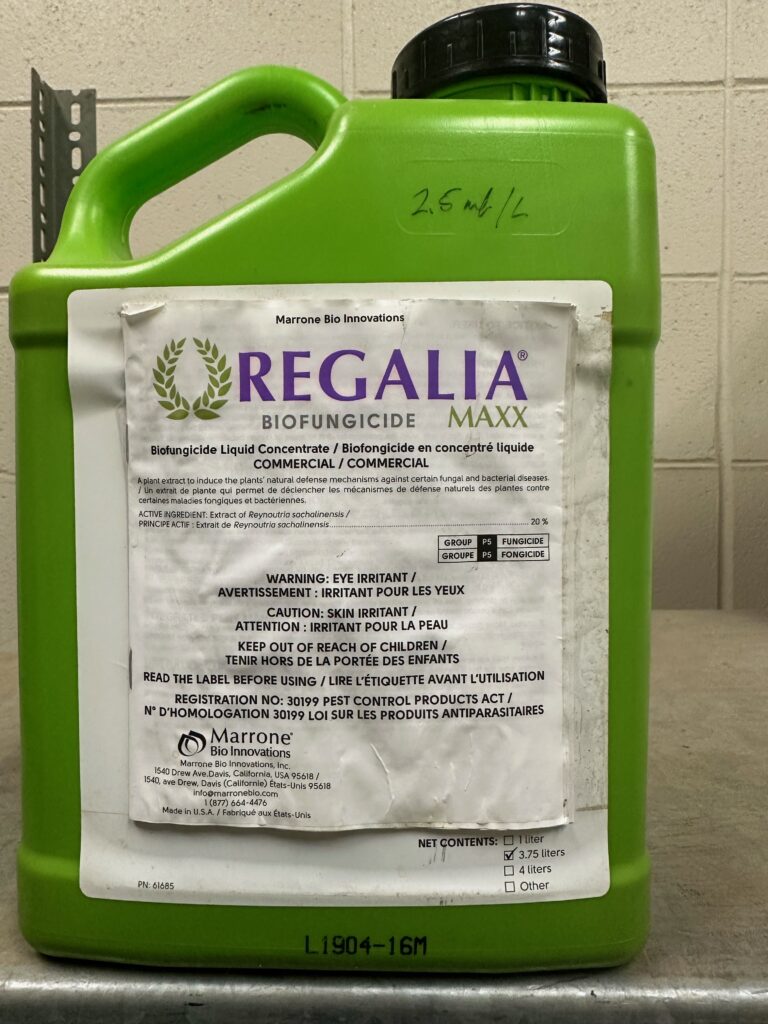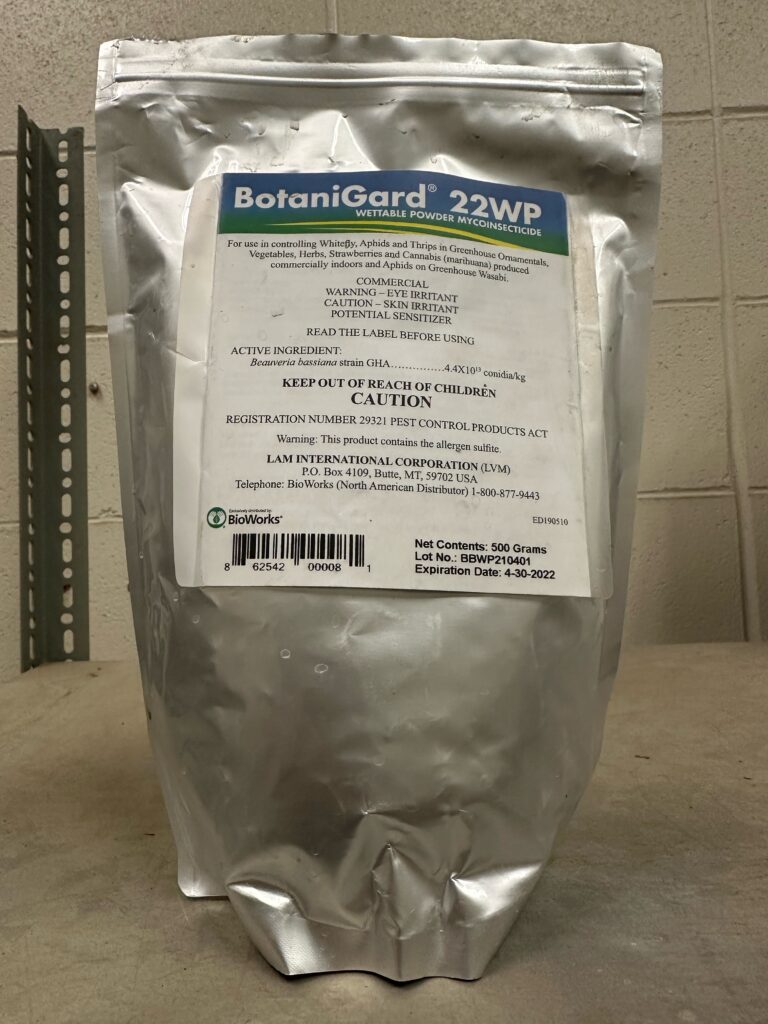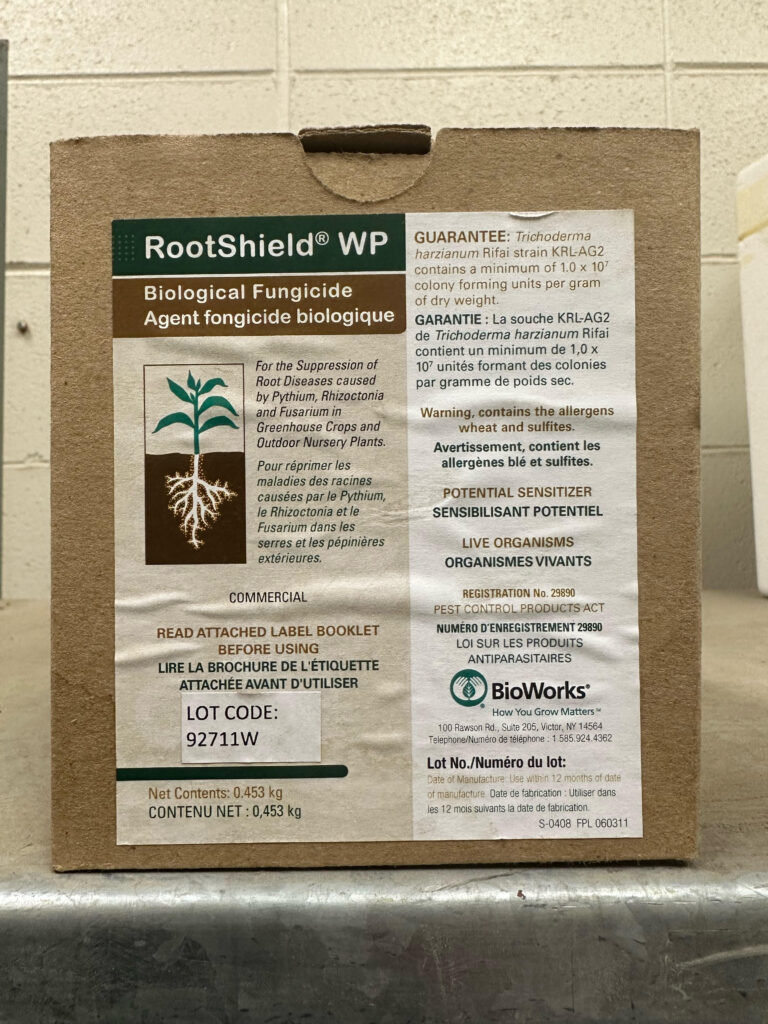
Features
Biopesticides: A Primer
An examination of the major categories of biopesticides.
January 23, 2023 By Dr. Kenneth Fry
 Biopesticides, as defined by the PMRA of Canada, are pest management agents derived from natural
sources such as fungi, bacteria, viruses, plants, animals and minerals.
Biopesticides, as defined by the PMRA of Canada, are pest management agents derived from natural
sources such as fungi, bacteria, viruses, plants, animals and minerals. All products represented as killing, harming, or negatively affecting a pest must be registered by the PMRA. We are familiar with synthetic and naturally occurring pesticides such as neonicotinoids (synthetic insecticide), pyrethrum (natural insecticide), azoxystrobin (fungicide), and glyphosate (herbicide). These products are synthesized or extracted from plants or microbes to be used against pests. However, there is another category of pesticide, biopesticides, that you may not be as familiar with.
Biopesticides, as defined by the Pest Management Regulatory Agency (PMRA) of Canada, are pest management agents derived from natural sources such as fungi, bacteria, viruses, plants, animals, and as we shall importantly note, minerals. In general, these products are of natural origin and are typically whole microorganisms. However, under the seemingly specific term “biopesticide,” the PMRA includes non-biological materials or substances used by the general public for other purposes.
In this primer on biopesticides, we will examine the major categories of biopesticides, their characteristics, and delve into the details of some common products available for use in greenhouses. There are three major categories of biopesticide; microbials, semiochemicals, and what are called non-conventional pesticides.
CATEGORIES OF BIOPESTICIDES
Microbials
Microbial products contain living organisms such as bacteria and fungi or their metabolites. Some microbials, such as viruses, have a very narrow host range. An example is the virus Autographa californica registered for use against the cabbage looper. It will not affect any insect outside of caterpillars in the cutworm Family Noctuidae. Another example is using viruses as a vaccine. The product V10 is an attenuated version of the virus strains related to the Pepino virus. It confers crossresistance to tomatoes. However, do not use this product in a greenhouse with peppers or eggplant as they could become infected.
The majority of microbial products available are fungi. Examples include Beauveria bassiana, Lecanicillium muscarum, and Metarhizium anisopliae which infect insects and mites and Trichoderma harzianum, T. asperellum, and Gliocladium catenulatum that prevent plant diseases. It is important to pay attention to the scientific name of the microbial to know which pest they are targeting, you also need to pay attention to the strain of the microbial. For example, there are several strains of Beauveria bassiana (GHA, ANT-03, PPRI 5339) and the label for strain PPRI 5339 differs from the others by including spider mites.
Most fungal microbials require humid or moist conditions to germinate and grow. If conditions are suitable, these biopesticides can persist in the crop resulting in low-levelsuppression of a pest, contributing to a sustained integrated pestmanagement (IPM) program.
Some microbial products are composed of bacteria or theirmetabolites or by-products. Bacillus thuringiensis var. Kurstaki is a bacterium that produces para-sporal crystalline bodies (proteins) that bind to the midgut cells in caterpillars. The result is a cessation of feeding and eventual death of the insect pest. Bacillus subtilis is a bacterium that produces lipopeptides that are toxic to disease-causing bacteria and fungi. It is effective at reducing existing infections of powdery mildew and in reducing the development of powdery mildew and Fusarium root and stem rot, if applied preventatively.
Not all microorganisms in biopesticides are pathogens, some are beneficial microorganisms that do not kill the pest, and instead, they outcompete the pest for resources or space. An example of this is Trichoderma harzianum, a fungus that colonises the root zone of plants, displacing potential plantpathogens. Some other biopesticides, such as an extract of Giant Knotweed, Reynoutria sachalinensis, induce a plant defense response.
Microbial biopesticides are not identical to conventional pesticides. Microbials are more often effective in a preventative role rather than a reactive role in an integrated pest managementplan. There is often a time lag between when the products are applied and results are detectable.
Semiochemicals
Semiochemicals are message-bearing compounds released by an organism to affect the behaviour of the same or different species. This category includes pheromones, kairomones and allomones. Pheromones are compounds released by insects to communicate with other insects. Most commonly, pheromones are released by female insects to attract males of the same species for mating. Males may release pheromones to con!rm to the female they are of the same species and are suitable candidates for mating. Mating pheromones can be used as a lure to a sticky trap. Using pheromones attractive to only one species, for example, the cabbage looper, will reduce contamination or by-catch in the lure, making it easier to count the number of target pests in the trap. Mating pheromones can also be released in high volume to disrupt mating by making it dif!cult for the male to locate the female.
An allomone, where the receiver of the scent does not benefit, can enhance the effectiveness of parasitoids in a biological control program. When a parasitoid wasp such as when Aphidius ervi lays an egg inside a potato aphid, she leaves an allomone to indicate that the host has been parasitized. This ensures her offspring do not have to compete against the larvae of another wasp, thereby reducing the probability of duplication of effort by the wasps.
Kairomones are compounds given off by one organism that benefits another organism. Predators can detect the scent of their prey and parasitoids can detect the scent of their hosts.
Host plants that have been damaged by plant-feeding insects release compounds that inform predators and parasitoids that prey or hosts, respectively, are present. In insect monitoring, traps are often baited with host plant odours to exploit this effect. A practical use is in determining where best to release biological control agents. Previously damaged or currently infested plants will be attractive to pests, possibly becoming hot spots, so releases should focus on these areas initially.

Biopesticides are considered to be reduced-risk pesticides
because they are generally not broad-spectrum.
Non-conventional
“Non-conventional pesticides” is a catchall term for everything else that does not fit into the above categories or that of conventional synthetic pesticides. This category of products is substances used by the general public for other purposes that have been adapted or adopted for use in pest management. Examples include garlic, salt, vinegar and essential oils. If one of these everyday substances is formulated and used expressly for pest management, then it must be registered with the PMRA. This is an important point, you cannot simply grab a jug of vinegar out of the kitchen and use it for disease suppression. Similarly, any other commonly available substance cannot be repurposed for pest management. The products have to be specifically registered for use in pest management. When a product is registered, factors such as phytotoxicity, toxicity to humans and non-target organisms, and the impact on the environment have been evaluated. While it may seem redundant – after all, we have used some of these products in cooking and cleaning for ages – the substances may not have been used at the concentrations or in the formulations that the pest management product is. A little garlic in a pasta sauce is vastly different from the amount of garlic applied as a repellent. Similarly, seemingly benign orange oil contains limonene, a terpene that functions much like the insecticide pyrethrum which inhibits neurotransmission by blocking sodium channels in the nerve axon.
Characteristics of biopesticides
Biopesticides are considered to be reduced-risk pesticides because they are generally not broad-spectrum. They target a narrower range of organisms than conventional pesticides. This is important for protecting bene!cial insects such as pollinators or the predators and parasitoids used in a biological control program. Biopesticides targeted against plant diseases are less likely to harm mycorrhizal fungi or other beneficial microorganisms in the soil or on the plant. A downside is that these products are not designed to be a total solution for a crop. Instead, several different products, each targeted at a speci!c pest, need to be used in an IPM program.
A significant bene!t of biopesticides is the lower probability of resistance being developed by the pest. Given that most of these products are living organisms themselves, there is inherent variability in the products such that the target is less likely to defend against it with a single mutation or adaptation. Another benefit of biopesticides is the limited residualtime in or on the crop. This results in shortened re-entry intervals allowing rapid access to the crop post application. Biopesticides that contain microorganisms can often be applied using the same equipment used for conventional pesticides. However, always check the label to con!rm that this is the case as there are exceptions. For example, hot fogging devices are not recommended for fungal or bacterial pathogens (for example Beauveria bassiana or Bacillus subtilis) as the heat will harm the microorganisms being applied. Droplet size and how you apply the product to the crop may also be different. For example, the fungal pathogen targeting white”ies and thrips, Beauveria bassiana, should be applied in a fine mist to disperse the spores over the plant surface. Do not apply to run-off as is commonly done with conventional pesticides, instead, you want the spores to remain on the surface of the plant so that the pest will more readily encounter the spores.
A common characteristic of biopesticides that can result in a grower not realising their effectiveness is that the effect is often delayed. Instead of the near-instantaneous death caused by many conventional pesticides, biopesticides can take days to suppress the pest population. Another consideration is the pest cadaver may not be easily detected due to being broken down or consumed by the pathogen. If you are going to adopt biopesticides as part of your integrated pest management program, be certain to read the product label to ensure proper application methods are employed and determine how to recognise the impact of the product (e.g. what does an infected pest look like).

Biopesticides are becoming increasingly
common in the marketplace.
There are an impressive array of products for use in Canada now as well as several products in the registration process. Some products available in other countriesmay yet come to be registered in Canada so keep an eye out for new registrations.
Biopesticides are becoming increasingly common in the marketplace with large corporations investing in their development through in-house work and by acquiring small biotech companies. The kinds of products being developed are expanding to include photosensitisers, new species of fungi and bacteria, and novel proteins from a variety of animals (for example, Spear-T contains a protein from scorpion venom). The range of products being developed is impressive, allowing growers to refine their IPM plans to reduce toxicity to plants, non-target organisms, workers, and the environment.
Kenneth Fry, Ph.D. is an instructor for theSchool of Life Science & Business at OldsCollege in Olds, Alta.
Print this page